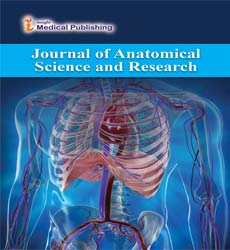Abstract
Myosin Heavy Chain Expression in the External Urethral Sphincter of Rats with Simulated Birth Trauma
Objective: Various animal models have been developed to understand the pathophysiology of stress urinary incontinence and identify suitable therapies. One of the most common animal models, a vaginal distention model that simulates the second phase of labor, has been shown to damage the pelvic floor muscles, particularly the external urethral sphincter, in rats and mice. The external urethral sphincter plays a crucial role in urinary continence. This study aimed to examine the changes in the fiber-type composition of this skeletal sphincter muscle under pathophysiological conditions in order to evaluate its functional and metabolic properties.
Methods: We used triple immunofluorescence labeling to visualize one slow (type 1) and two fast (types 2A and 2B) myosin isoforms in the female rat external urethral sphincter and examined changes in their expression within the sphincter 4 weeks after vaginal distention in an established animal model of postpartum stress urinary incontinence.
Results: We found that the fiber-type compositions were similar to those of intact animals, with type 2A fibers predominant throughout the sphincter, and type 2B fibers restricted to the proximal segment. Type 1 fibers were concentrated in the proximal and distal ends of the sphincter. However, the ratio of total cross-sectional area of type 2B fibers was significantly reduced in rats with vaginal distention. Moreover, the minor diameter of type 2B fibers was significantly decreased.
Conclusion: These findings indicate that vaginal distention may induce irreversible changes in myosin heavy chain expression in the rat external urethral sphincter, especially of type 2B isoforms.
Author(s): Toshiko Tsumori, Wakako Tsumiyama
Abstract | Full-Text | PDF
Share This Article
Google Scholar citation report
Citations : 16
Journal of Anatomical Science and Research received 16 citations as per Google Scholar report
Abstracted/Indexed in
- Google Scholar
Open Access Journals
- Aquaculture & Veterinary Science
- Chemistry & Chemical Sciences
- Clinical Sciences
- Engineering
- General Science
- Genetics & Molecular Biology
- Health Care & Nursing
- Immunology & Microbiology
- Materials Science
- Mathematics & Physics
- Medical Sciences
- Neurology & Psychiatry
- Oncology & Cancer Science
- Pharmaceutical Sciences

